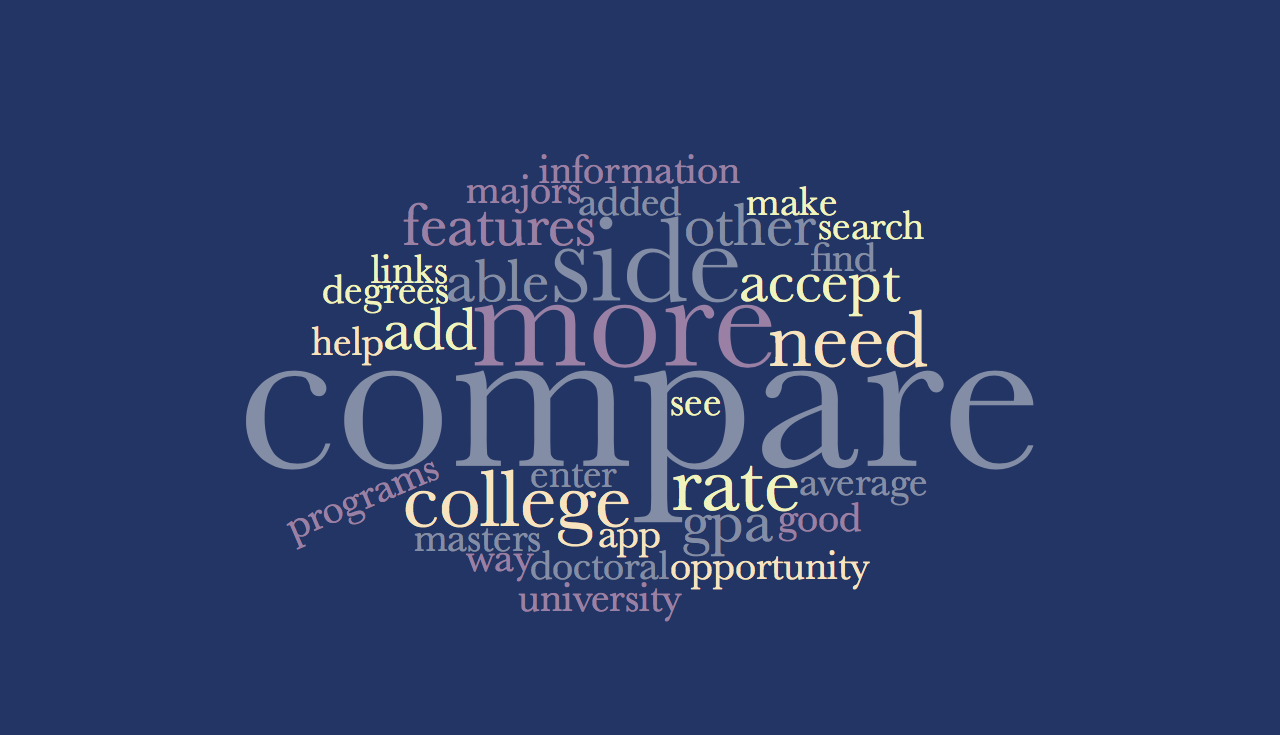For many prospective students, choosing a college is an enormous challenge. After being bombarded with top-ten lists, catalogues, online databases, advertisements, and the opinions of family and friends, they still may not have enough of the important information they need to make the most informed decision possible. Prospective students must decide which colleges to apply to, how to finance their education, and which programs to pursue. Fortunately, the U.S. Department of Education created a great tool to shine a light on this dark and noisy landscape – the College Scorecard.
Not only does the Scorecard deliver quality first-of its-kind outcomes information – like loan repayment rate and median salaries of institutions – the tool is also smartly designed and easy to use. When it debuted in 2015, one of the Scorecard’s largest drawbacks was the lack of a function to make side-by-side comparisons between institutions. In 2016, Young Invincibles surveyed a group of 90 high school students from across the country and found the number one request was for the ability to compare schools.
But last month, the Department used its latest Scorecard data update to debut a new comparison tool for users. Allowing users to view up to ten schools at a time, the tool provides direct, apples-to-apples comparisons on factors like average annual cost, average salary after attending, and total typical debt after graduation. This is important because studies show consumers give greater weight to information that matches up or is aligned. YI found that when data is not aligned, users must exert more effort to find relevant information and may become frustrated or give up their search entirely.
YI is currently working with technology companies to further improve college decision making by empowering students with relevant data and information. We’ve been scanning the emerging literature on how to design mobile apps and websites to support students across the broad spectrum of decisions they have to make. Here is a snapshot of some of the things we’ve learned so far:
 (Figure 1 – Keywords from student comments about the College Scorecard)
(Figure 1 – Keywords from student comments about the College Scorecard)
- A mobile friendly interface is essential for reaching today’s young adults.
- Each category of information should be explained in easy-to-understand language. A simple way to achieve this is by utilizing messages which appear when the cursor hovers over an icon, otherwise known as tooltips. This provides important assistance without breaking up the user experience, offering helpful explanations in the moment. The Scorecard includes tooltips for every information category while other comparison tools only offer them in select instances.
- Visualizations should feature primary colors with adequate white space, as not to visually overwhelm the user. While bold and eye catching, the color patterns in the Scorecard are repeated and are not meaningful to the context of the data (e.g. green is not used for all money related data). Also, the colors are all in the “cool” scale (green, blue, purple, aqua) instead of across a more diverse range. Other college search comparison tools also fail to include diverse color patterns and visualizations.
- A share button allows users to email the comparison page to others (or, presumably, themselves). Though this may be helpful, the overall likelihood of use is questionable because of the additional step of having to sign into an email account.
- Research shows that overloading consumers with information leads to confusion, ineffective decision-making, and perhaps no decision at all.
The comparison tool is an important first step in empowering students in their college search, but there are still improvements which need to be made. The Department of Education should link Scorecard data to the FAFSA site, giving students the ability to compare schools which receive their FAFSA information. Program-level data is also needed, as students can make better choices with a better understanding of potential earnings and employment outcomes.
In addition to our work on college search, YI has engaged with students and higher education experts to better understand their perspectives on college outcomes, data, and privacy. YI is a strong advocate for improving higher education data systems through our Student Agenda for Postsecondary Data Reform. In the coming months, we will be releasing more information about the College Search Enhancement Project and our research into college choice.
